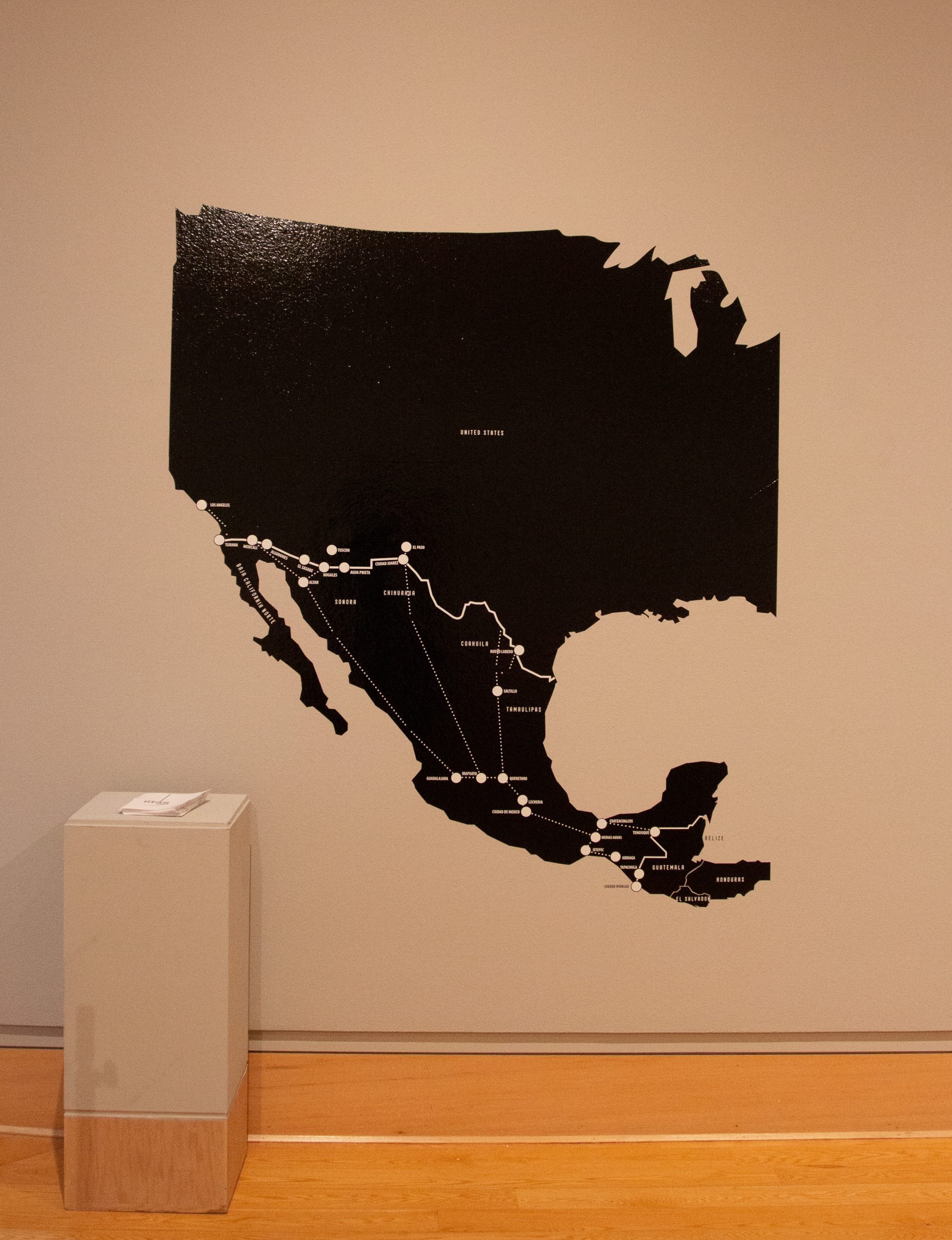Content Warning: The exhibition Crossing the Vertical Border: On the Central American Migrant Trail contains violence and sexual assault representations. This article discusses these topics. Please see The Lawrence University website for counseling and Title IX resources at Lawrence.
On Thursday, February 3, Professor Thelma Jiménez-Anglada delivered a gallery talk on the exhibition she researched and curated in the Wriston Art Galleries, called Crossing the Vertical Border: On the Central American Migrant Trail. Jiménez-Anglada, an assistant professor of Spanish at Lawrence University, began the talk by emphasizing that the exhibition was planned for the Spring Term of 2020, before the start of the COVID-19 pandemic. Therefore, although Jiménez-Anglada originally planned to have other guest speakers for the opening of the exhibition, she delivered her talk alone. Jiménez-Anglada also intended this exhibition to open during a different political climate, in which the topics of immigration and border control under the presidency of Donald Trump were detrimental.
However, Jiménez-Anglada emphasized that despite a change in presidency, issues on the United States–Mexican border are still very much alive today, stating, “Children are still in cages. Families still haven’t been reunited.” Crossing the Vertical Border: On the Central American Migrant Trail is both a photographic and textual representation of the dangerous obstacles migrants face while on the trail, including violence, sexual assault, rape and death. The exhibition, featuring a large wall decal map of Mexico and the United States, highlighting the length and path of the trail, is meant to guide viewers as if they were traveling on the trail themselves.
As visitors walk through the exhibition, they begin with an overview of the Central American Migrant Trail, starting from Mexico. The opening text on the wall states, “Each year, approximately 500,000 undocumented Central Americans cross Mexico en route to the United States. For the majority of them, this voyage signifies persecution, extortion, assaults, rape or even death—either at the hands of organized crime or under the wheels of a train.”
Next, visitors interact with passages of text from Óscar Martínez’s non-fiction novel Los migrantes que no importan, later translated into English as The Beast. For example, one wall text quoting Martínez states, “We’re walking among the dead. Life’s value seems reduced, continuously dangled like bait on a fishing line.” Along with textual representations, photographs from Edu Ponces and Tonir Arnau (RUIDO Photo and Elfaro.net) are hung along the walls. These photographs are of scenes and people on the Central American Migrant Trail, and many depict the struggles of the journey.
Jiménez-Anglada spoke of these dangers during the gallery talk, highlighting that many migrants do not make it far enough to cross the border into the United States. Many migrants are kidnapped and killed, as Jiménez-Anglada explains: “Undocumented people are killable in the eyes of the state.” In addition, Jiménez-Anglada spoke of the life-threatening, yet common reality of sexual assault and rape of women along the trail. Women’s bodies on the trail act as cash transactions to cross the border, allowing for migrants’ bodies to seem disposable, Jiménez-Anglada explains.
Jiménez-Anglada concluded the gallery talk by reading aloud a list of names to remember the Central Americans who once traveled on the Central American Migrant Trail.
For those interested in viewing Crossing the Vertical Border: On the Central American Migrant Trail, the Wriston Art Galleries will be open through March 11.

